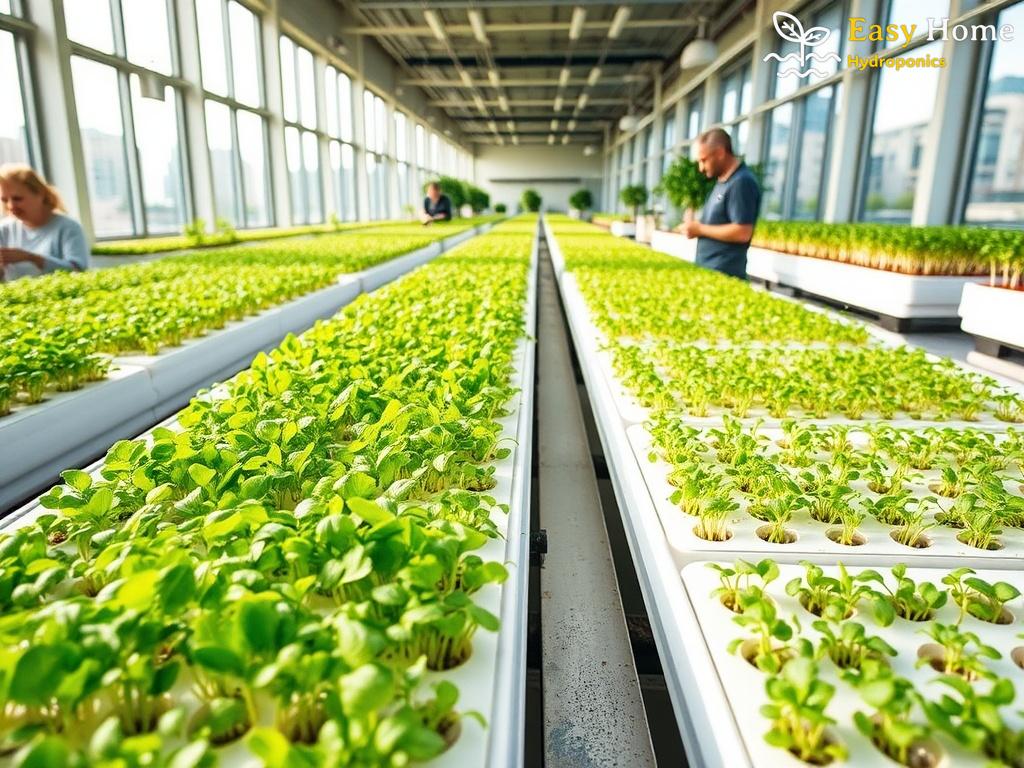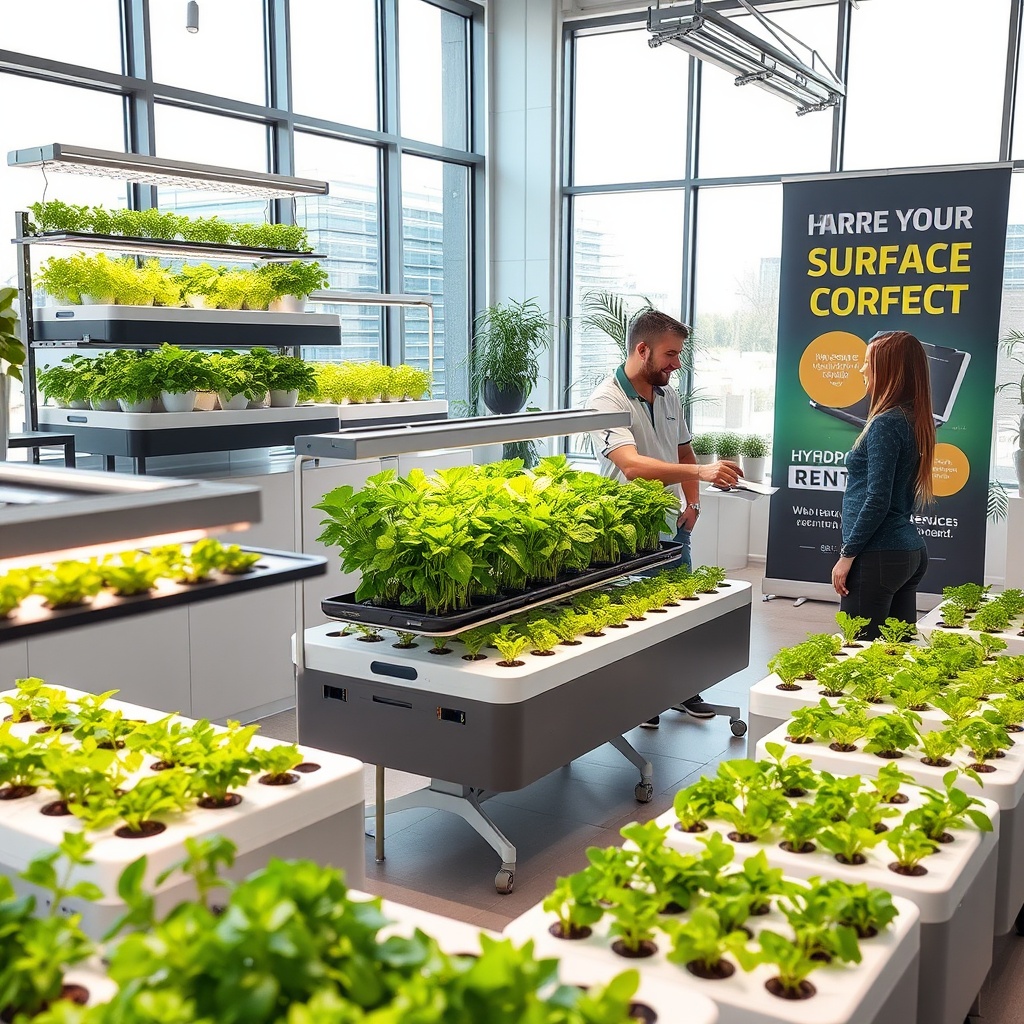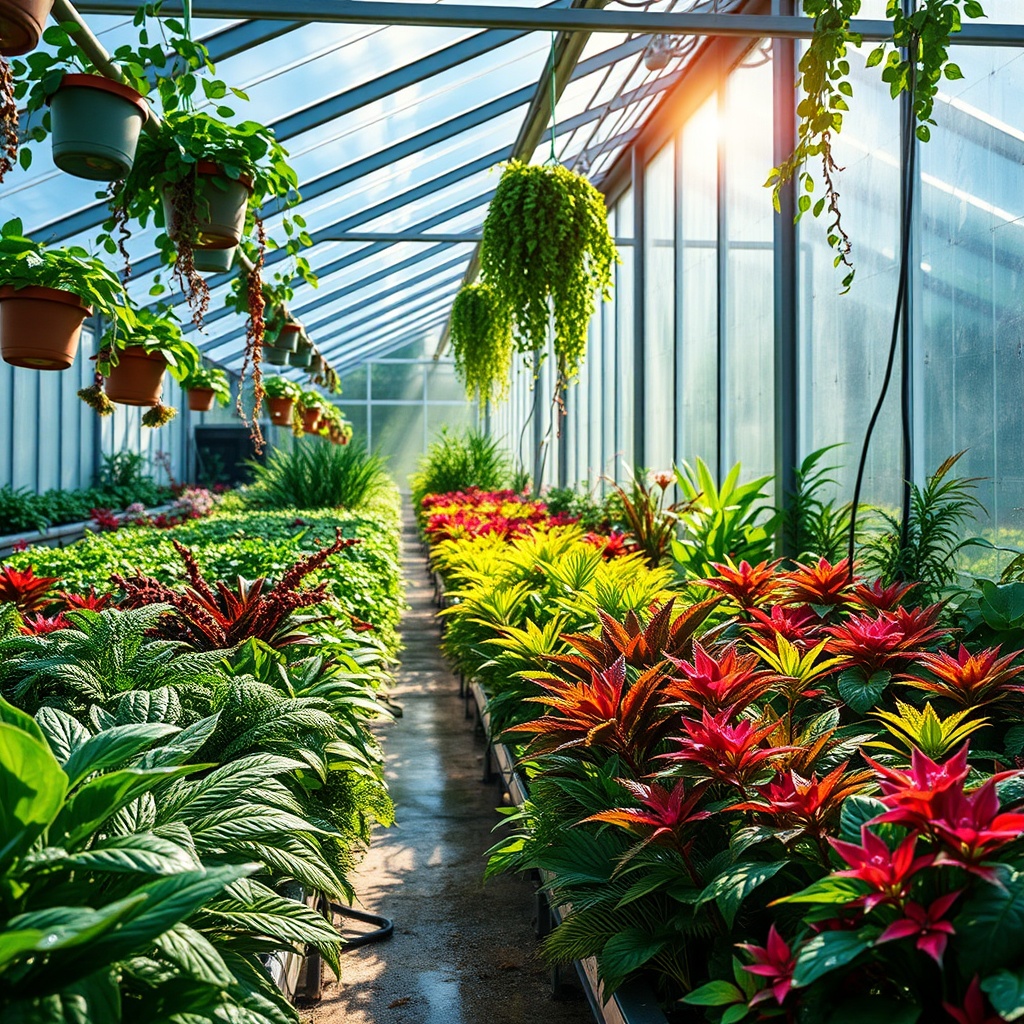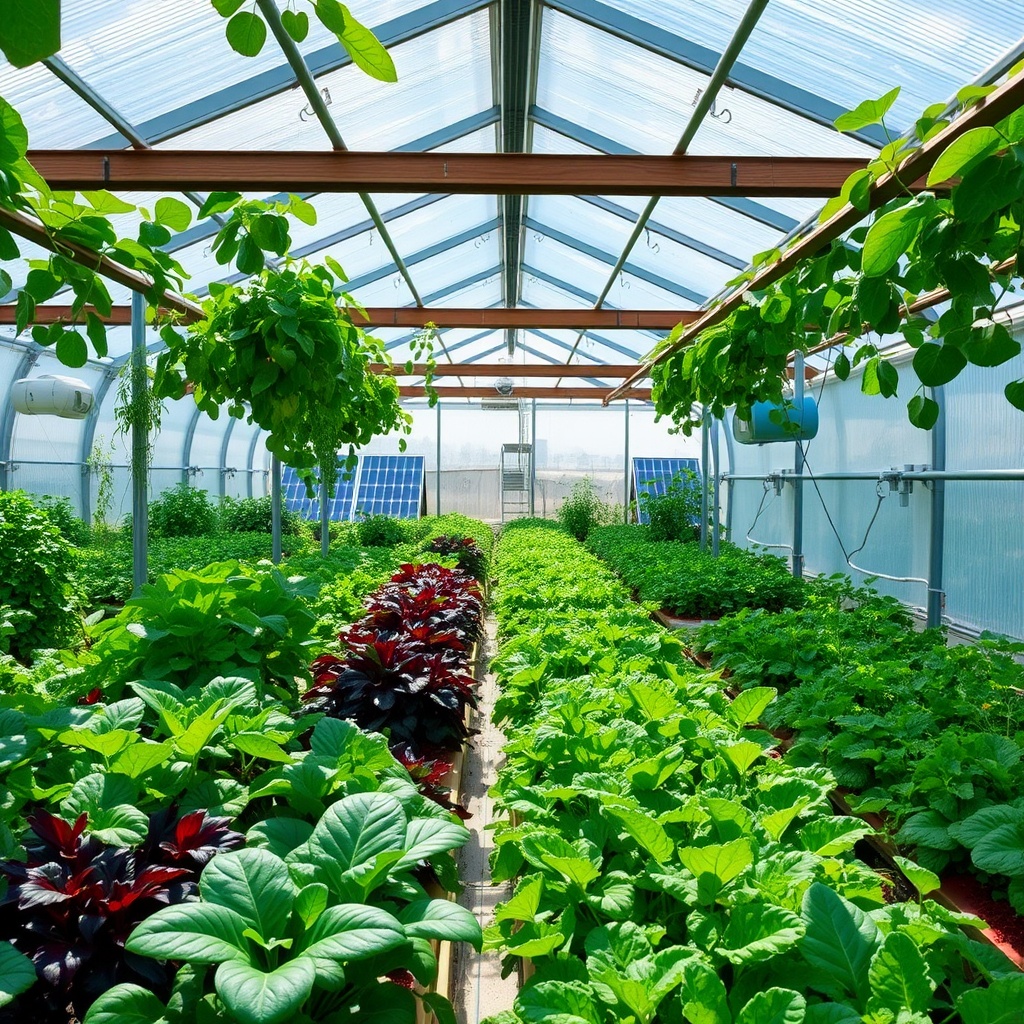The Rise of Hydroponics: A New Green Frontier
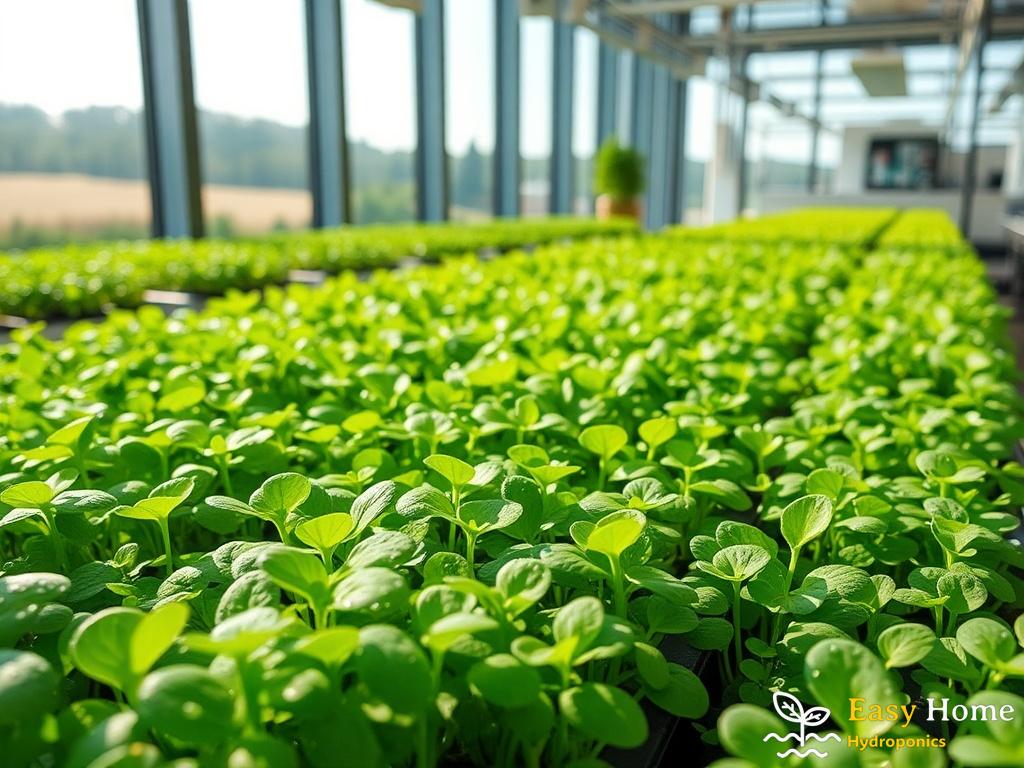
As the global population continues to rise, the demand for sustainable food production methods becomes increasingly urgent. Hydroponics, the practice of growing plants without soil, is emerging as a game-changer in the agricultural landscape. This innovative approach not only maximizes space and resources but also offers a solution to the challenges posed by traditional farming methods.
With hydroponics, farmers can produce crops year-round, regardless of weather conditions or soil quality. This method utilizes nutrient-rich water to nourish plants, allowing for faster growth and higher yields. As interest in hydroponic systems grows, so does the potential for sprout and microgreen production, appealing to health-conscious consumers and gourmet chefs alike.
The advantages of hydroponic systems are numerous and compelling. By eliminating the need for soil, hydroponics reduces the risk of pests and diseases, leading to healthier plants and less reliance on pesticides. Furthermore, these systems are designed to use significantly less water than traditional farming methods, making them an eco-friendly choice for aspiring growers.
Hydroponics also allows for efficient use of space, making it possible to cultivate a wide variety of crops in urban settings or areas with limited arable land. This has led to a surge in interest from both commercial growers and hobbyists, eager to explore the possibilities this technology offers.
Key Benefits of Hydroponics:
- Faster growth rates compared to soil cultivation
- Reduced water usage and waste
- Less dependency on chemical pesticides
- Year-round production capabilities
- Space-efficient growing systems
The market for hydroponic sprout and microgreen production is on the rise, driven by growing consumer interest in healthy eating and sustainable farming practices. As people become more conscious of their food sources, they are increasingly seeking out fresh, locally-grown produce. Hydroponics provides a solution that aligns perfectly with these values.
According to recent reports, the hydroponics market is expected to witness significant growth in the coming years. This growth is fueled by advancements in technology, which have made hydroponic systems more accessible and affordable for both small-scale and large-scale producers.
| Market Insights | Projected Growth Rate | Key Drivers |
|---|---|---|
| Hydroponic Market | 20% CAGR | Health Trends, Urbanization, Technology Advancements |
| Microgreens Demand | 15% CAGR | Health Consciousness, Culinary Trends |
The future of hydroponics looks promising, with an expanding consumer base and the potential for innovative developments in growing techniques. As we embrace this new green frontier, the possibilities for sustainable food production are boundless.
Microgreens Market Trends: Profitability and Potential
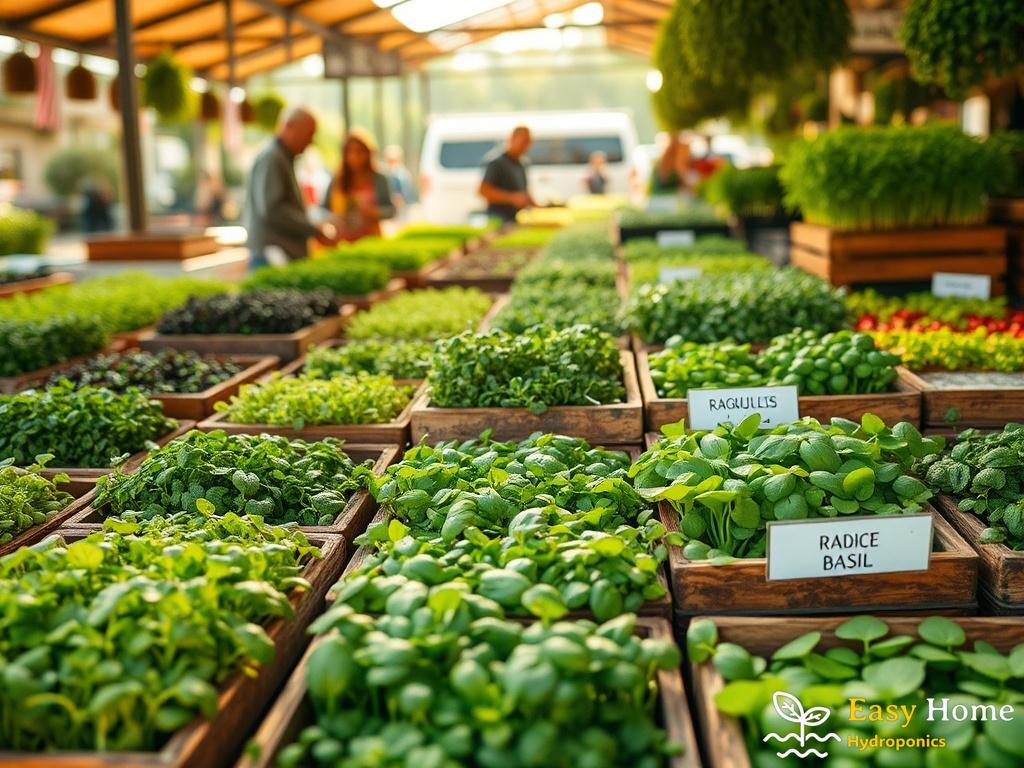
The microgreens market is rapidly evolving, driven by consumer preferences for healthier food options and the increasing popularity of gourmet dishes. As more restaurants and health-conscious consumers seek fresh, nutrient-dense ingredients, hydroponic microgreens have emerged as a lucrative segment within the agricultural sector. This burgeoning market not only holds promise for commercial growers but also offers exciting opportunities for urban farming enthusiasts.
Understanding Market Dynamics
The profitability of the microgreens market is influenced by several factors, including consumer demand, production costs, and market accessibility. With a staggering 15% compound annual growth rate (CAGR) anticipated, the microgreens market is poised for remarkable expansion. This growth is largely attributed to the trend of incorporating microgreens into everyday diets, both at home and in culinary establishments. Furthermore, the ease of cultivating these tiny greens through hydroponic systems enhances their appeal, as they can be grown in limited spaces, making them ideal for urban environments.
Emerging Opportunities for Growers
The potential for profitability in the microgreens sector is substantial. Hydroponically grown microgreens not only offer a quicker turnaround time from seed to harvest but also command premium prices in the marketplace. Restaurants, particularly those focused on farm-to-table concepts, are increasingly seeking local sources for their fresh produce, creating a direct channel for growers. By establishing partnerships with local eateries or farmers’ markets, hydroponic producers can tap into this lucrative niche. Additionally, the rise of online grocery shopping has further expanded market reach, allowing growers to sell directly to consumers.
| Market Aspect | Details |
|---|---|
| Consumer Interest | Growing demand for fresh, locally-sourced, and nutrient-dense foods. |
| Production Costs | Lower water and pesticide costs compared to traditional farming methods. |
| Distribution Channels | Farmers’ markets, direct-to-consumer sales, and restaurant partnerships. |
| Investment Trends | Increased investment in hydroponic technology and urban farming initiatives. |
In conclusion, the trajectory of the microgreens market reflects a shift towards sustainable, health-oriented food production. As consumers prioritize quality and sustainability, hydroponically grown microgreens not only meet these demands but also present a robust opportunity for profitability in the ever-changing landscape of food production.
Sustainable Practices in Sprout Production
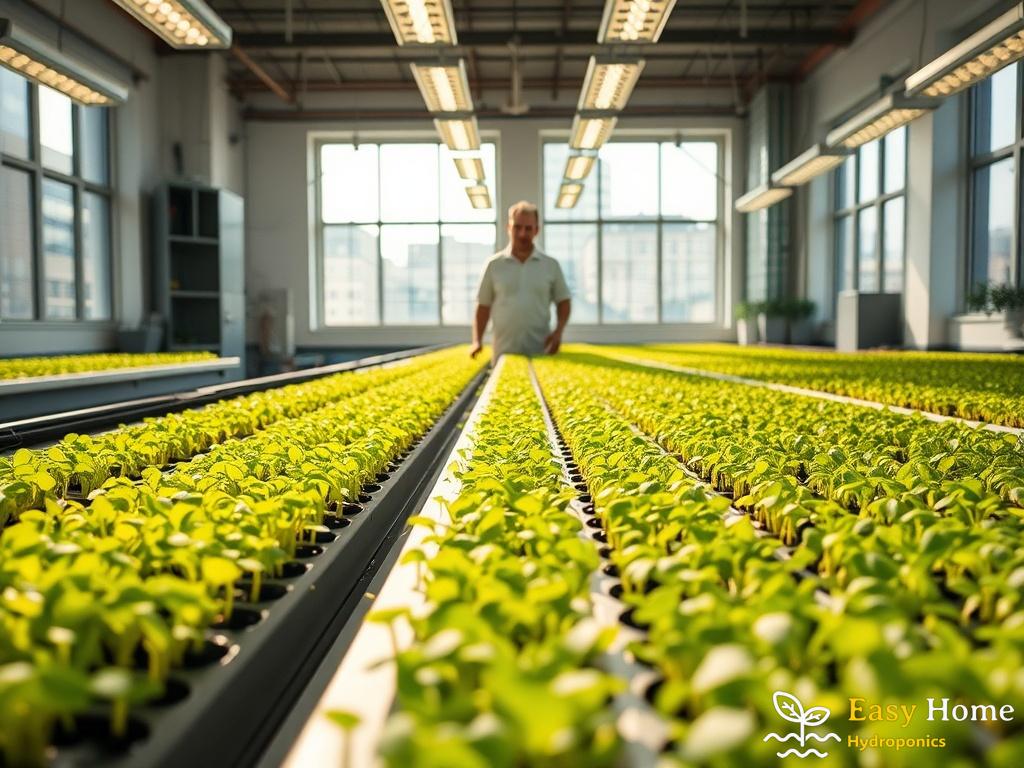
As the world pivots towards sustainable agriculture, the spotlight is firmly on hydroponic sprout production. This innovative method not only enhances crop yields but also significantly reduces the environmental footprint associated with traditional farming. By embracing eco-friendly practices, growers can cultivate nutrient-rich sprouts while contributing to a healthier planet.
Adopting sustainable practices in sprout production involves a holistic approach that emphasizes resource conservation and environmental stewardship. Hydroponic systems inherently require less water than conventional farming, but there are additional strategies that can optimize resource use further.
- Water Recycling: Implementing closed-loop systems allows nutrient-rich water to be reused, minimizing waste and ensuring plants receive consistent nourishment.
- Organic Nutrients: Utilizing organic fertilizers and nutrients can boost plant health while reducing chemical runoff that could affect local ecosystems.
- Renewable Energy Sources: Integrating solar panels or wind turbines into hydroponic operations can significantly cut down on energy costs and reliance on fossil fuels.
Promoting sustainable practices extends beyond the farm; it involves engaging the community and fostering a culture of environmental awareness. By hosting workshops and farm visits, growers can educate consumers about the benefits of hydroponic systems and the importance of sustainability. This not only builds a loyal customer base but also encourages more individuals to consider their food sources and the methods behind them.
The future of sprout production lies in the hands of technology. Advanced hydroponic systems equipped with sensors and automation can significantly enhance crop management practices. For instance, precision farming techniques allow for the exact monitoring of nutrient levels, ensuring that plants receive precisely what they need for optimal growth. This not only leads to healthier sprouts but also minimizes waste and maximizes efficiency.
As the market for hydroponic sprouts and microgreens flourishes, adopting sustainable production practices will be crucial in shaping a resilient agricultural future. By prioritizing eco-friendly methods and community involvement, growers can play a pivotal role in transforming the food landscape into one that values sustainability and health.
Navigating Regulations: Hydroponic Farming Compliance
The emergence of hydroponic farming has transformed the agricultural landscape, offering innovative solutions to meet the rising demand for fresh produce. However, as the industry grows, so does the need for compliance with various regulations that govern hydroponic operations. Understanding these regulations is essential for growers aiming to succeed in this competitive market. Compliance not only ensures the safety and quality of products but also enhances the credibility of hydroponic practices among consumers and stakeholders alike.
Navigating the complex web of regulations surrounding hydroponic farming can be daunting. Each region may have its own set of rules pertaining to food safety, environmental protection, and agricultural practices. Growers must familiarize themselves with local, state, and federal regulations that could impact their operations. Food safety regulations often require growers to implement rigorous sanitation practices and maintain detailed records of production methods. In addition, environmental regulations may dictate how water and nutrients are managed, ensuring that the hydroponic systems do not adversely affect local ecosystems.
When delving into the compliance requirements, several key areas stand out. Licensing and Permits are fundamental to legal hydroponic operations. Depending on the scale and scope of the business, farmers may need to obtain specific licenses that signify adherence to agricultural standards. Furthermore, labeling requirements for products must be meticulously followed, ensuring that consumers are well-informed about the source and quality of their food. Additionally, growers should be aware of pesticide regulations, even if hydroponic systems typically reduce the need for chemical interventions. Understanding the legalities surrounding organic certifications can also open new markets for growers, appealing to the health-conscious consumer base.
To successfully navigate the regulatory landscape, hydroponic farmers should adopt a proactive approach. Establishing robust record-keeping practices is essential, as it not only aids in compliance but also provides valuable insights into production efficiency. Regular training for staff on compliance matters can help maintain adherence to safety standards and operational protocols. Moreover, networking with local agricultural agencies can provide growers with updates on regulatory changes and best practices. Investing in compliance technology can also streamline the process, automating record-keeping and ensuring that growers remain up-to-date with evolving regulations.
In summary, while the journey of hydroponic farming is filled with opportunities, it is crucial for farmers to remain vigilant in navigating the regulatory landscape. By understanding compliance requirements and establishing best practices, growers can not only protect their businesses but also contribute to a sustainable and reputable industry.
Consumer Preferences: What Drives Demand for Greens?
In today’s health-conscious world, consumer preferences are rapidly evolving, creating a fertile ground for hydroponic sprouts and microgreens. As individuals become more aware of the importance of nutrition, they are actively seeking out fresh and nutrient-dense food options. This shift in mindset is significantly impacting the demand for greens, particularly those grown through innovative hydroponic methods. Understanding the underlying factors that drive this demand is crucial for producers aiming to thrive in this burgeoning market.
With a growing emphasis on health and wellness, consumers are increasingly prioritizing their dietary choices. Hydroponic microgreens, known for their rich nutrient profiles and vibrant flavors, perfectly align with this trend. Packed with vitamins, minerals, and antioxidants, these tiny greens offer an easy way to boost nutrition in meals. As health enthusiasts and culinary aficionados alike discover the versatility of microgreens, their popularity continues to rise.
Another compelling factor influencing consumer choices is the desire for locally-sourced and sustainable food options. Hydroponic farming presents an ideal solution, as it allows for the cultivation of fresh produce in urban areas, reducing the carbon footprint associated with transportation. Additionally, the eco-friendly nature of hydroponics resonates with environmentally-conscious consumers. By choosing hydroponically grown sprouts and microgreens, individuals feel empowered to make choices that positively impact both their health and the planet.
As culinary trends evolve, the demand for unique flavors and innovative ingredients is on the rise. Hydroponic microgreens are not only nutrient-dense but also offer a diverse range of flavors that can elevate any dish. From peppery arugula to delicate pea shoots, these greens are becoming essential components in gourmet cooking. Chefs are increasingly incorporating microgreens into their menus, driving consumer interest and creating a buzz around these exceptional ingredients.
Key Drivers of Demand for Hydroponic Greens:
- Health Consciousness: Informed consumers are actively seeking nutrient-rich foods.
- Sustainable Practices: Local sourcing and eco-friendly farming methods resonate with modern values.
- Culinary Exploration: Unique flavors and innovative culinary applications pique consumer interest.
By understanding these consumer preferences, hydroponic producers can tailor their offerings to meet the growing demand for sprouts and microgreens. As the market continues to expand, staying attuned to these trends will ensure success in delivering the greens that consumers crave.

